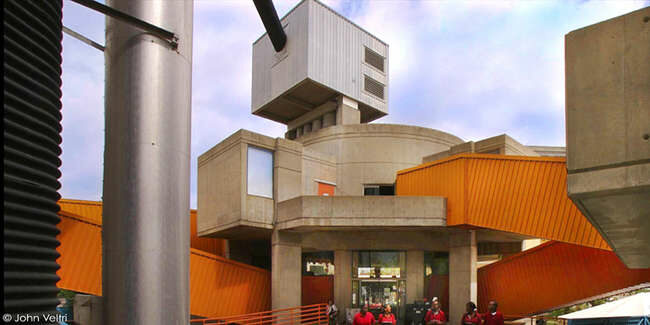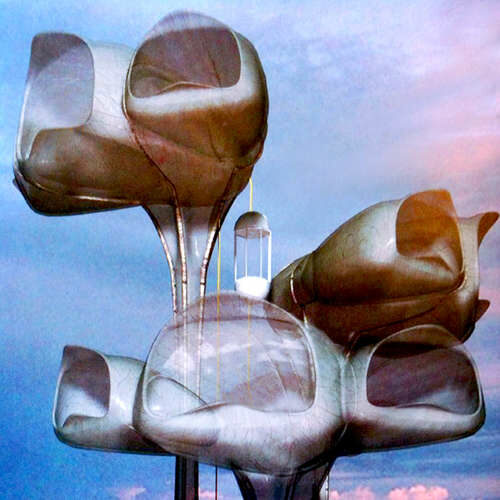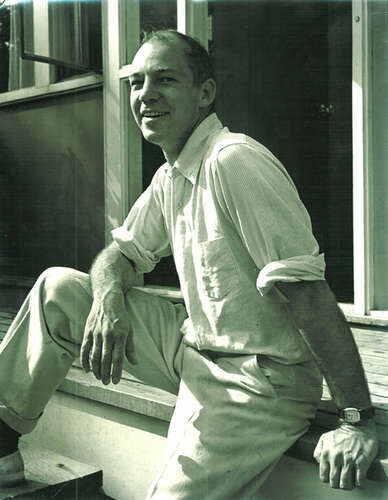John Johansen, Nonconforming Modernist, Dies at 96


















For more than 50 years, John Johansen challenged the norms of architecture—designing buildings that looked like no others and teaching students to do the same. The last of the "Harvard Five," architects who studied under Walter Gropius in the 1940s and then settled in New Canaan, Connecticut, Johansen was probably the most experimental of the group. While the other four in the unofficial club—Philip Johnson, Marcel Breuer, Eliot Noyes, and Landis Gores—built more than he did, Johansen played the vital role of provocateur.
His best-known building, the Mummers Theater in Oklahoma City (now known as the Stage Center) looks more like an erector set than a conventional piece of architecture. Completed in 1970, it presents visitors with a series of concrete boxes attached to a trio of circular spaces and connected by an armature of ramps and tubes. His Telephone Pole House (1968) in Greenwich, Connecticut, used 104 40-foot-long utility poles to support a set of building volumes overlooking a picturesque ravine. For his own residence in Stanfordville, New York, he used translucent-plastic siding (as well as clear glass) to bring daylight inside. Called the Plastic Tent House, the 1975 structure replaced an earlier house that burned down and allowed Johansen to explore the notion of impermanence while experimenting with new materials.
While Johnson, Breuer, and Noyes advanced a heroic form of Modernism in the 1950s and '60s, Johansen took a more guerilla approach that worked on a smaller scale and assumed a nonconformist stance. His buildings were not always easy to like and were often criticized as being difficult for the public to understand. His Labyrinth House in Westport, Conn., features rugged concrete elements that did not endear itself to the talk-show host Phil Donahue, who bought it and then tore it down, calling it "an avant-garde bomb shelter."
A number of his buildings have been razed, including three of his houses in New Canaan. The fate of the Mummers Theater is now in doubt, as it sits empty and damaged by a flood in 2010.
In addition to his houses and the Mummers Theater, Johansen's key works included the U.S. Embassy in Dublin (1964), Clowes Memorial Hall and Opera House at Butler University in Indianapolis (1965, with Evans Woollen), the Orlando Public Library in Florida (1966), the Morris A. Mechanic Theater in Baltimore (1967), and Goddard Library at Clark University in Worcester, Mass., (1969). Johansen collaborated with Ashok Bhavnani from 1973 to 1987 on projects such as the Island House and Rivercross apartment towers on Roosevelt Island in New York City.
Instead of looking to architectural history, semiotics, or literary criticism for ideas, Johansen often turned to technology and science for new directions. In the 1950s and '60s, he drew inspiration from advances in electrical and mechanical engineering, and then in the 1990s and later he adapted biomorphic concepts in a series of unbuilt projects. He passed these ideas onto new generations of architects while teaching at Pratt Institute and Yale University and in books such as Nanoarchitechture: A New Species of Architecture (2002).
Born in New York City in 1916, John MacLane Johansen worked for Breuer after graduating from Harvard, and then at Skidmore, Owings & Merrill, before opening his own firm in New Canaan in 1948. Married three times, he is survived by his last wife, Ati, who is the daughter of Walter Gropius, as well as a son, Christen, a daughter, Deborah Harris, and a stepdaughter, Erika Markou.











